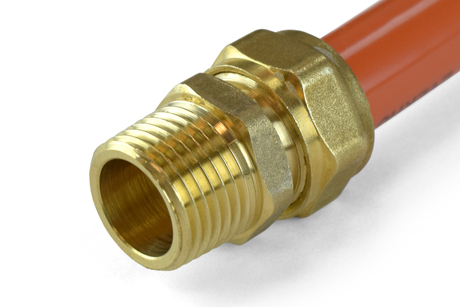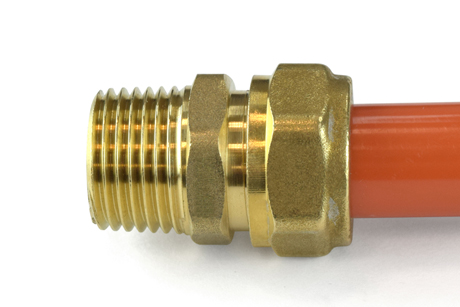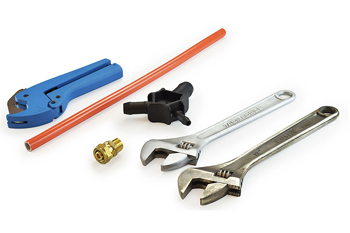 Tools and materials required:
Tools and materials required:
- PEX-AL-PEX tubing
- PEX cutter
- PEX-AL-PEX compression fitting(s)
- PEX-AL-PEX reamer
- (2) Adjustable crescent wrenches or similar (12-14”)
Safety first - always wear appropriate eye protection gear.
Step 1: Cut the pipe
Position the pipe cutter perpendicular to the pipe and make a smooth, clean cut.
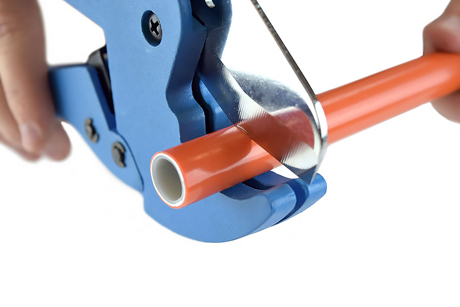
Cut pipe should be free from burrs.
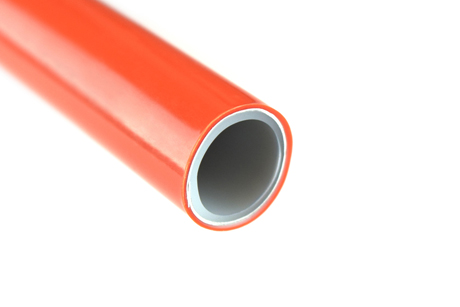
Step 2: Ream the pipe
Select appropriate size reamer inlet and insert it fully into the PEX-AL-PEX pipe.
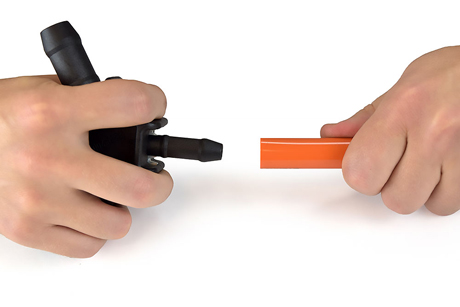
The edge of the pipe must touch the reamers’ blade as shown.
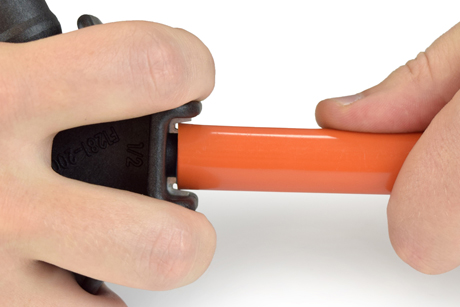
While holding the pipe, firmly push the reamer in and give it 2-3 full turns (in any direction). Shavings indicate that the procedure is being performed properly.
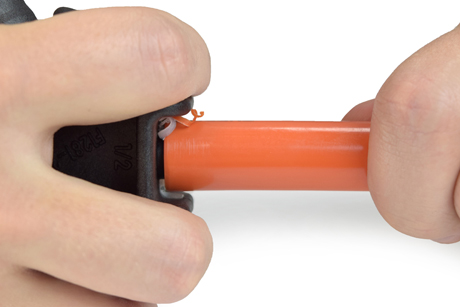
This is how the reamed pipe should look like. Reaming returns the pipe to its’ original round shape and prepares it for installation of the fitting.
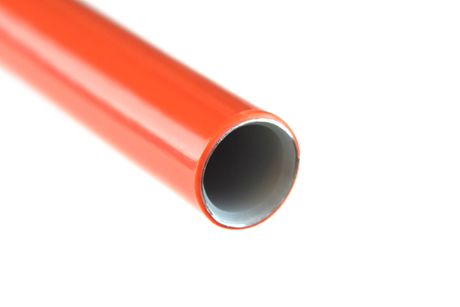
Step 3: Install the compression fitting
First, slide the compression nut over the pipe. Second, slide the split O-ring as shown on the picture.
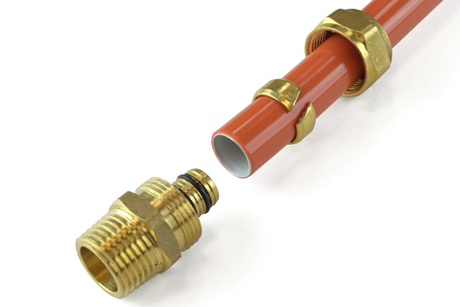
Fully insert the main body of the PEX-AL-PEX compression fitting into the pipe.
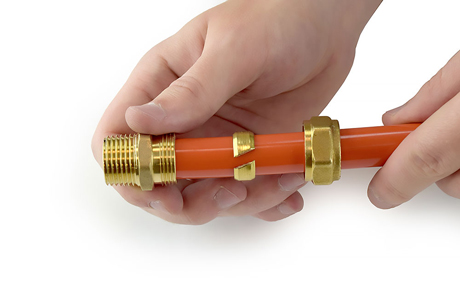
Step 4: Tighten the compression nut
Slide the nut and O-ring toward the fitting and tighten the compression nut over the fitting by hand (~ 2 full turns).
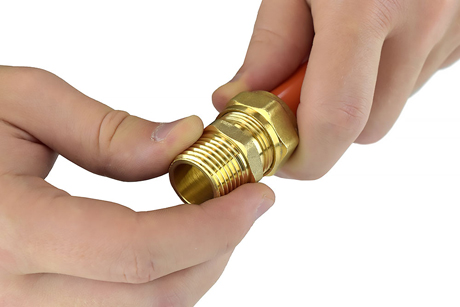
Position one crescent wrench over the fitting and the other over the compression nut. Tighten the compression nut (~ 1-1.5 full turns). You can use a marker to indicate a starting point.
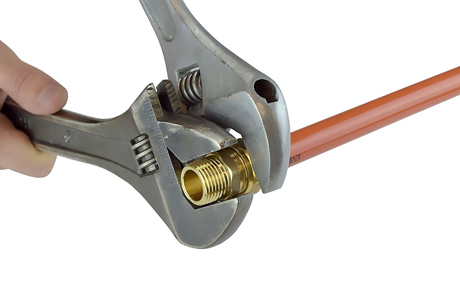
Step 5: Connection is complete
This is how a finished connection should look like. Always inspect the fitting visually after the work is complete.
Frequently Asked Questions:
Q:
Is PEX-AL-PEX reamer necessary? Can I use a standard pipe reamer?
A: PEX-AL-PEX reamer performs (2) functions – it reams the pipe inside and outside (which can be done with a standard pipe reamer), but also returns the pipe to a round shape, which cannot be accomplished with a standard pipe reamer. Since PEX-AL-PEX tubing can be deformed when being bent or cut, it must be “rounded” in order for the fitting to fit inside the pipe properly.
Q:
Are PEX-AL-PEX compression fittings reusable?
A: It is possible to disconnect the fitting but it could be quite difficult, and so for practical reasons, the answer would be no.
Q:
Are these fittings suited for potable water applications?
A: No. They do not meet the lead content limitations and therefore are not approved for potable water use.
Q:
Is there a possibility of over- or under-tightening the fitting?
A: If you follow the instructions above, the risks of over- or under-tightening are very small. Since all systems must be pressure tested prior to being put into use, it is possible to tighten the fitting more if there’s a leak at the connection point. In order to avoid over-tightening the compression nut, do not use excessive force and wrenches larger than indicated when installing the fitting.
Q:
Should I apply any thread sealant, Teflon tape or glue to the compression fittings’ threads?
A: No. Not only these are unnecessary, they may compromise the integrity of the connection. Thread sealant and tape can (and in fact, must) be applied over the MNPT/FNPT threaded portion of the fitting, which connects to another pipe or fitting.
Q:
What must be the minimal opening of the wrench?
A: For 1” PEX-AL-PEX fittings, which is the largest size we carry, the compression nut requires a minimum of 25/16” (or 1-1/2” and 1/16”) opening. Adjustable pliers (like the Channellock®) can also be used.
Q:
Which connection method is better for PEX-AL-PEX – compression or press?
A: Press fittings are more expensive and require an expensive PEX tool, but are quicker and easier to install and therefore are best suited for high-volume installations where pricing is not an issue. Compression fittings require somewhat more time and labor but cost substantially less and do not require a special PEX-AL-PEX tool. You can find more information on different PEX connection methods
here.
Q:
I see that the brass O-ring is split - is it normal?
A: Yes. When the compression nut is tightened, the open ends of the O-ring come together, exerting pressure upon the PEX-AL-PEX pipe, allowing it to be compressed over the fitting's barbs.
Q:
What purpose do the black rubber O-rings over the fitting's barbs serve?
A: The O-rings are intended to prevent water leakage. The main purpose of the barbs is to prevent the fitting from popping out under pressure from the pipe. The O-rings should not be removed from the fitting, nor is it necessary to lubricate them in any way.
 Tools and materials required:
Tools and materials required:










